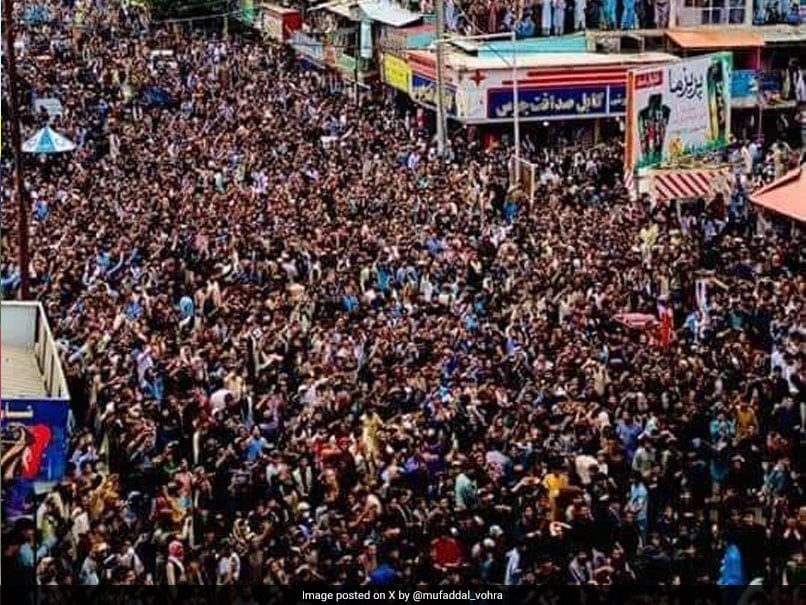A Syrian man prays at a mass grave where they buried those who were killed by the sarin struck during a 2013 chemical weapons attack that was blamed on then President Bashar Assad’s forces, in Zamalka neighbourhood, on the outskirts of Damascus, Syria, Wednesday, Dec. 25, 2024.
| Photo Credit: AP
A key Syrian rescue group and an activist said on Wednesday (December 25, 2024) that a burial site outside Damascus was likely a mass grave for detainees held under former president Bashar al-Assad and fighters killed in the civil war.
In a vast walled area located near the Baghdad Bridge, some 35 kilometres (22 miles) from the capital, AFP journalists visiting the site saw a long row of graves more than one metre deep, mostly covered with cement slabs.
Several of the slabs had been moved and inside, white bags could be seen stacked over each other with names and numbers written on them. One of the bags contained a human skull and bones.
“We think this is a mass grave — we found an open grave with seven bags filled with bones,” said Abdel Rahman Mawas from the White Helmets rescue group, which visited the site several days earlier.
He told AFP by telephone that the bags, six of which bore names, were “taken to a secure location”, adding that “necessary procedures were begun for DNA testing”.
He said if additional graves had been exposed it meant other people may have been searching the site, warning people to “stay away from graves and let the relevant authorities handle them”.
The site, near the Adra industrial area northeast of the capital, is less than 20 kilometres from the Saydnaya prison.
Diab Serriya, from the Association of Detainees and Missing Persons of Sednaya Prison, said the site was first identified in 2019 through “testimony of an intelligence personnel member who had deserted”.
Satellite imagery suggests the site was in use from 2014, he said.
“Probably this grave contains detainees but also former regime or opposition fighters killed in battle,” he told AFP by telephone.
The notorious Saydnaya complex, the site of extrajudicial executions, torture and forced disappearances, epitomised the atrocities committed against Assad’s opponents.
Serriya said “the bags of bones were probably brought from other graves”, adding that “the road to discovering who is buried here will be long”.
The doors of Syria’s prisons were flung open after an Islamist-led rebel alliance ousted Assad this month, more than 13 years after his brutal repression of anti-government protests triggered a war that would kill more than 500,000 people.
The fate of tens of thousands of prisoners and missing people remains one of the most harrowing legacies of the conflict.
Mohammed Ali from the Adra municipal council denied residents were aware of the site, which is located near a Syrian army facility.
“It was forbidden to approach it or take photos as it was a military zone,” he told AFP.
Published – December 25, 2024 11:15 pm IST














